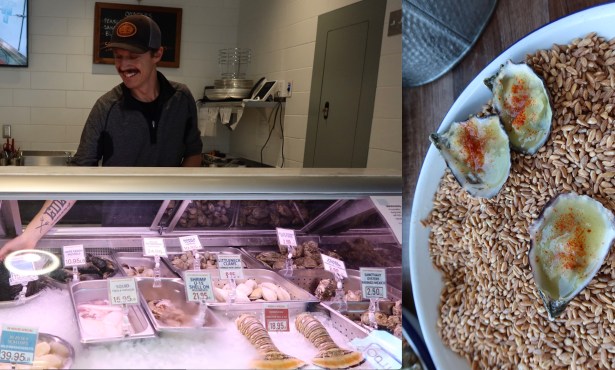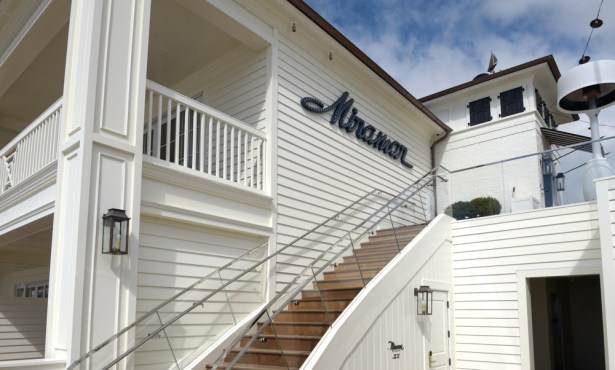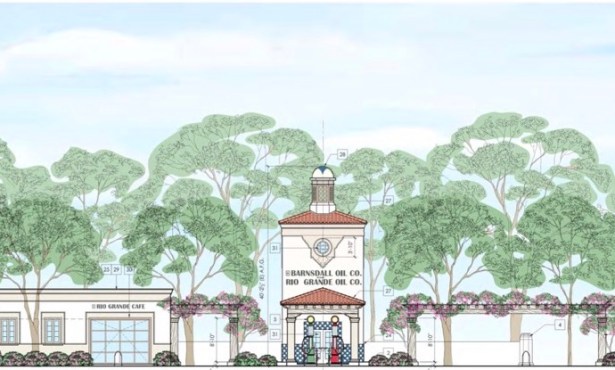What Is Best for Bishop Ranch?
Goleta Development in Light of Traffic, Water, Money, and Space
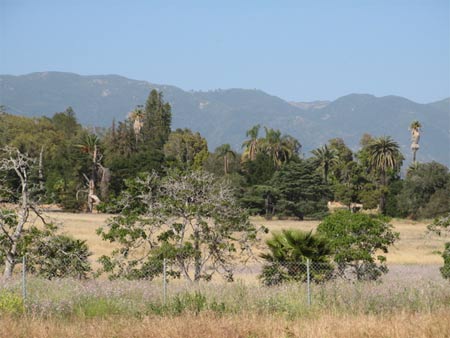
Part of good planning is timing and pacing. When the first Goleta Council put together the General Plan, part of its charge was to identify sites for new housing in order to meet the state Regional Housing Needs Assessment (RHNA). The decision was made to rezone some industrial and office sites along the Hollister corridor south of the freeway to residential zoning at 20 units per acre. One hope was that at these densities, housing could be built that would be “affordable by design.” The escalation of housing prices during the last seven years dampened that hope, though today, as prices deflate, perhaps it may be possible again.
The beauty of these sites for housing is that they are close to hundreds of jobs, the university, commercial areas and public transportation along Hollister Avenue. Many residents would be able to walk, bicycle or take the bus to work.
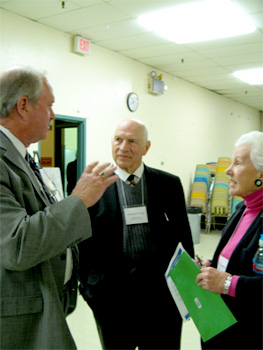
In last week’s column, I outlined the developer’s request to rezone the 240-acre Bishop Ranch from agriculture to “Mixed Use: Bishop Ranch.” The proposal is for 1,195 residential units of a variety of types, a 90,000-square foot commercial center, and 80 acres of passive and active parkland.
The developer makes the case that the majority of houses on the Hollister Avenue sites will be multi-family units, whereas a greater variety of housing types, including single family homes would be built on Bishop Ranch. Many older residents, such as myself, are fortunate to live in the single family detached homes that we bought years ago. But today these homes are selling for anywhere from $700,000 to over $1 million, and new ones are even more expensive. This is not affordable housing for low income or even average wage earners in Goleta. The interest of the city should be to encourage housing affordable to city residents. Only 20 percent of the housing units in this project are proposed to be affordable.
The Bishop Ranch proposal describes its development as self-contained, with stores and recreation amenities within walking or biking distance. However, it is not close to work sites. We can expect that 1,500 or more people will be leaving to go to work each day and coming home each night, with major traffic impacts on the freeway ramps at Los Carneros and Storke roads and the already busy intersections on Hollister Avenue.
While the active recreation fields and the passive recreation parkland would be valuable assets to the city, at this time it is not in a position to develop, maintain or operate such facilities. In better financial times, other things being equal, these would be attractive amenities.
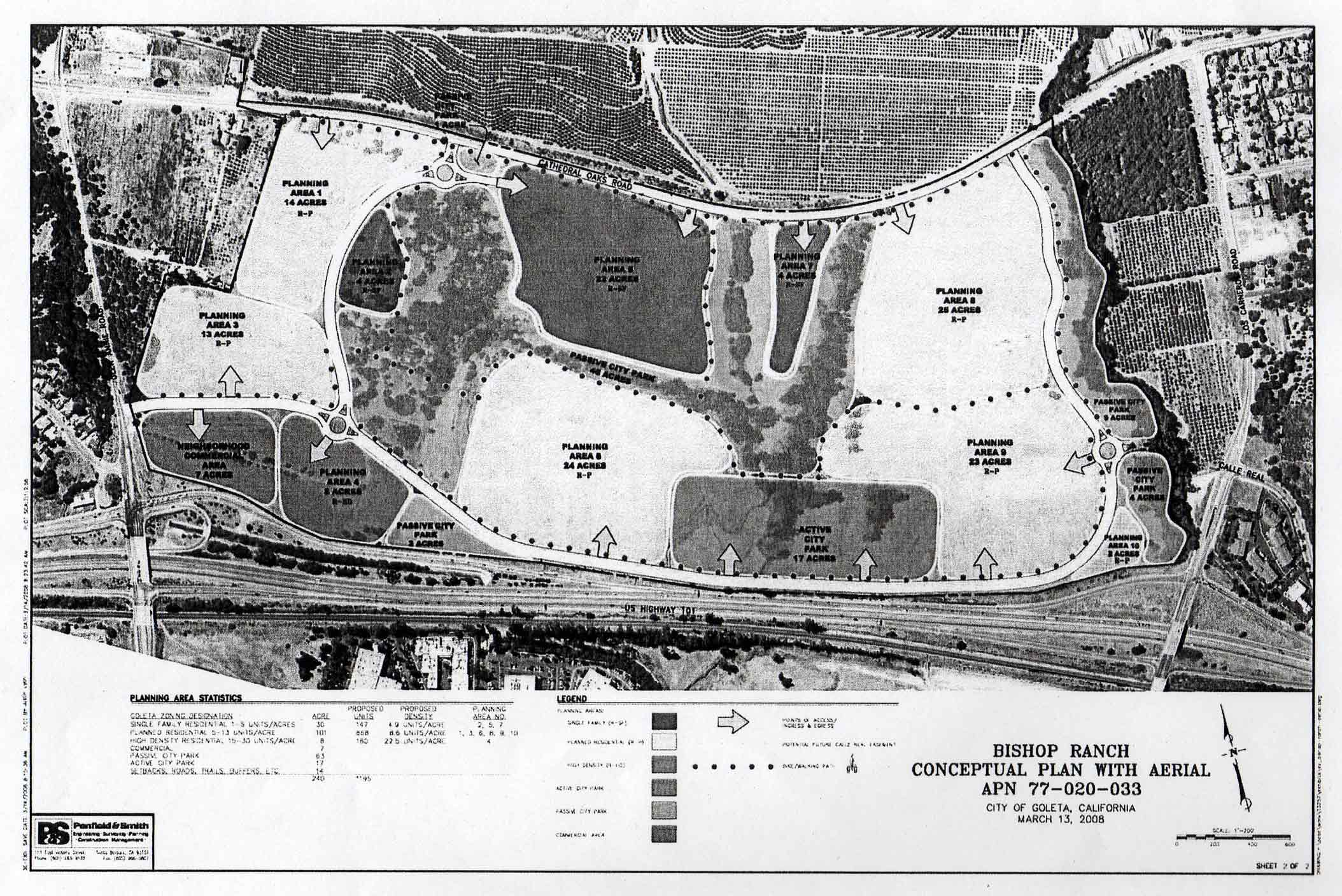
This parcel has not been farmed for close to 50 years, according to the developer. As I pointed out last week, an aerial photo from 1935 shows orchards covering most of the site. The water issue is complicated but suffice it to say that at this time there is no agricultural water meter on the Ranch. So regardless of the viability of the soils, anything other than dry farming probably would be difficult. Perhaps there is water on the parcels north of Cathedral Oaks Road that could be diverted for the southern parcel. In recent years the value of locally grown crops, for quality and freshness and reduction of the carbon footprint from long distance trucking, is being increasingly recognized. It has even spawned a new term “locovore” ! Agricultural land, once paved over, is gone forever.
The Goleta Water District’s Urban Water District Plan through 2030 does not include the Bishop Ranch. To obtain water for development, it would be in competition with other projects within the District’s boundaries, with no guarantee of being served.
If farming is not feasible, does this mean that development is the only option?
This is where timing and pacing come in. Every piece of vacant land does not have to be zoned for development now. The city has sufficient sites for housing to meet its current state mandate. These sites are more likely to produce affordable units, with fewer traffic impacts, than what is proposed for Bishop Ranch. Agricultural lands should be preserved as far as possible for future food production. Failing that, it can be held in reserve to meet housing needs in later years.
The developer would like to be ready to go in four years. I think he needs to wait.
Goleta Calendar
Hearing on UCSB Long Range Development Plan and Draft EIR
Rescheduled to June 4 at 7 p.m. at the Isla Vista Theater
980 Embarcadero del Norte, Isla Vista
CORRECTION: An above photo initially ran with the erroneous caption “Aerial photo of 1935 Bishop Ranch.” It now has the correct caption, “Concept plan for Bishop Ranch.”

